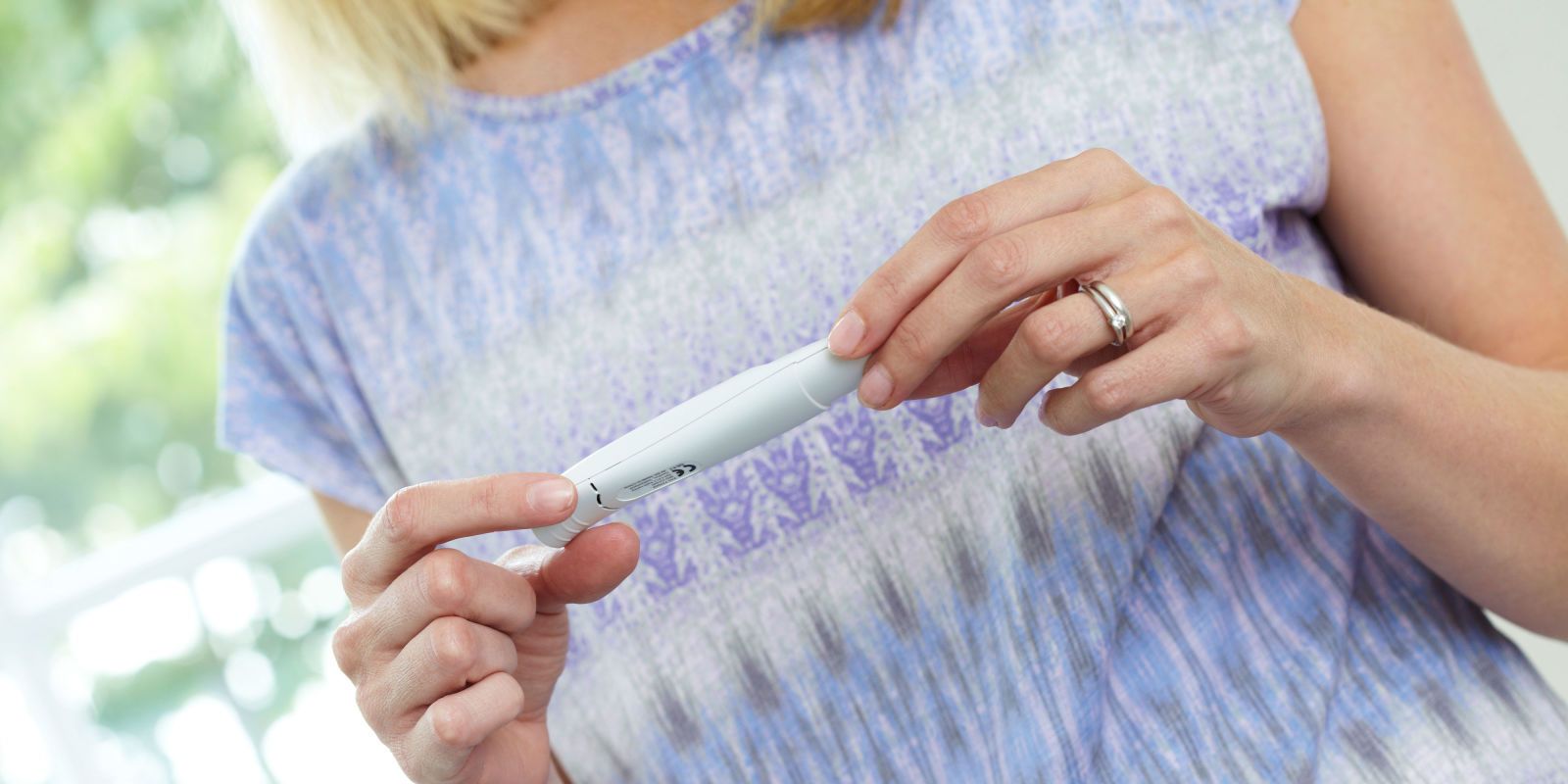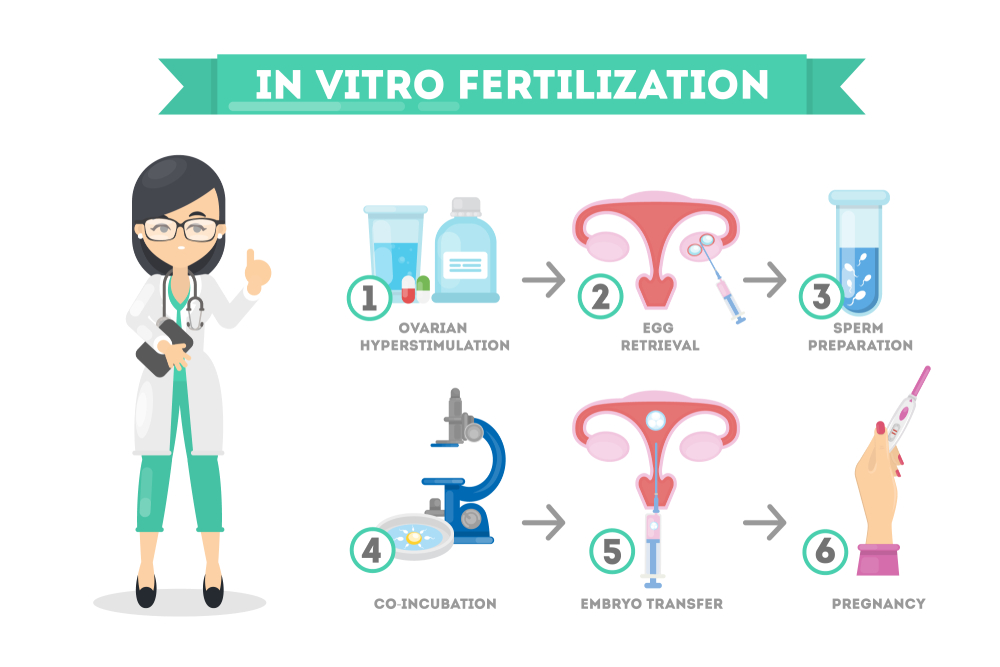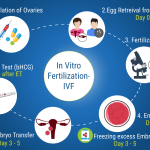How Long Does IVF Treatment Take? Your Complete Guide to the Journey
In vitro fertilization (IVF) can feel like a big, mysterious process if you’re just starting to explore it. Maybe you’ve heard stories of “miracle babies” or seen friends go through it, and now you’re wondering: How long will this take for me? The truth is, IVF isn’t a one-size-fits-all journey. It’s a series of steps that can stretch over weeks or months, depending on your body, your situation, and even a little bit of luck. But don’t worry—I’m here to break it all down for you in a way that’s easy to follow, with real insights and practical tips to help you feel ready.
IVF is a fertility treatment where eggs and sperm are combined outside the body, then placed back into the uterus to grow into a pregnancy. It’s been around since 1978, when the first IVF baby, Louise Brown, was born, and today, it’s helped millions of people become parents. But the big question remains: how much time does it actually take? Let’s dive into the full timeline, step by step, and uncover some details you might not find everywhere else—like how your age, lifestyle, or even new tech can shift the process.
The Big Picture: What’s the Total Time for IVF?
At its core, one full IVF cycle—from the first doctor’s visit to the pregnancy test—usually takes about 6 to 8 weeks. That’s roughly a month and a half to two months. But here’s the catch: that’s just one cycle. If it works the first time, great! You could be holding a positive pregnancy test in under two months. But if it doesn’t, or if you need extra prep beforehand, the journey could stretch to several months or even a year.
Think of it like baking a cake. The actual baking might take an hour, but gathering ingredients, preheating the oven, and letting it cool can stretch the whole thing out. IVF is similar—there’s the main “cycle,” but prep work and follow-ups add time. Here’s a quick snapshot of what you’re looking at:
- Prep Phase (before the cycle starts): 2-4 weeks, sometimes longer if tests or tweaks are needed.
- Active IVF Cycle (meds to embryo transfer): 4-6 weeks.
- Waiting for Results (pregnancy test): 10-14 days after transfer.
- Total for One Try: 6-8 weeks, not counting prep.
If you need more than one cycle (and many people do), multiply that by two or three. About 50% of women under 35 get pregnant on their first try, but success rates drop with age, so older folks might need a few rounds. Let’s walk through each part so you know exactly what to expect.
Step 1: Getting Ready—What Happens Before the Cycle?
Before you even start IVF, there’s a warm-up phase. This isn’t the flashy part you see in movies, but it’s super important. It’s when your doctor figures out what’s going on with your body and makes a game plan. This can take 2 to 4 weeks, though it might stretch longer if you hit a snag.
What’s Involved?
You’ll kick things off with a visit to a fertility specialist. They’ll run tests like blood work to check your hormone levels, an ultrasound to peek at your ovaries, and maybe a semen analysis for your partner (if you have one). These tests help answer questions like: Are your ovaries ready to produce eggs? Is your uterus a good home for a baby?
For some, this phase is quick—just a couple of appointments. But if there’s a hiccup—like low egg count or a health issue like endometriosis—your doctor might suggest extra steps. Maybe you’ll need to take birth control pills for a month to sync your cycle, or tweak your diet to boost your chances. I knew someone who spent three months losing weight before starting because her doctor said it could help her odds. It worked—she’s got twins now!
Practical Tips to Speed Things Up
- ✔️ Get organized early: Gather your medical history and insurance info before your first visit.
- ✔️ Ask questions: Find out if you need lifestyle changes (like cutting caffeine) right away.
- ❌ Don’t skip tests: Delaying them just pushes everything back.
This prep time isn’t “wasted”—it’s setting you up for success. Think of it as laying the foundation for a house. You wouldn’t skip that, right?
Step 2: The Active Cycle—How Long Does the Main Process Take?
Once you’re cleared to start, the active IVF cycle begins. This is the heart of the process, where you’re taking meds, growing eggs, and getting embryos ready. It typically lasts 4 to 6 weeks, broken into a few key stages.
Stage 1: Ovarian Stimulation (10-14 Days)
Your ovaries naturally release one egg a month, but IVF needs more to increase your chances. You’ll take hormone shots—usually for 10 to 14 days—to help your ovaries produce multiple eggs. These aren’t fun (think tiny needles in your belly), but they’re quick, and you can do them at home.
Doctors monitor you with ultrasounds and blood tests every few days to see how your eggs are growing. If they’re slow, this stage might stretch a bit longer. A 2023 study from the American Society for Reproductive Medicine found that women over 35 sometimes need an extra 2-3 days of stimulation because their ovaries respond more slowly. Patience pays off here—rushing can mean fewer eggs.
Stage 2: Egg Retrieval (1 Day)
When your eggs are ready, you’ll have a short procedure—about 20-30 minutes—to collect them. You’re under light sedation, so it’s not painful, but you’ll need a day to rest after. This happens around day 14 of your cycle, give or take.
Stage 3: Fertilization and Embryo Growth (3-5 Days)
In the lab, your eggs meet the sperm (either your partner’s or a donor’s). If all goes well, they turn into embryos over 3 to 5 days. Some clinics wait until day 5 for a “blastocyst” stage—stronger embryos with better odds. This waiting game is nerve-wracking, but it’s worth it.
Stage 4: Embryo Transfer (1 Day)
The doctor places one or two embryos into your uterus using a thin tube. It’s quick—about 10 minutes—and feels like a Pap smear. You might rest for a bit after, but you’re back to normal life the same day.
Total Time for the Cycle
Add it up: 10-14 days of shots, a day for retrieval, 3-5 days in the lab, and a day for transfer. That’s 4 to 6 weeks from start to finish. But here’s a twist—some folks freeze their embryos and transfer them later (called a frozen embryo transfer, or FET). That adds a month or two, but it can lower risks like ovarian hyperstimulation syndrome (OHSS), a condition where your ovaries overreact to the meds.
Step 3: The Two-Week Wait—How Long Until You Know?
After the transfer, you enter the infamous “two-week wait” (TWW)—about 10 to 14 days. This is when the embryo (hopefully) implants in your uterus, and your body starts making pregnancy hormones. You’ll take a blood test at the end to check for hCG, the pregnancy hormone.
Why It Feels Like Forever
This wait is brutal. You might feel every twinge and wonder, Is this it? Studies show stress doesn’t ruin your chances, but it sure makes the days drag. One trick? Distract yourself—binge a show, knit a scarf, anything to keep your mind busy.
What If It Doesn’t Work?
If the test is negative, you’ll need a break—usually 4-6 weeks—before trying again. Your body needs time to reset, and you might need it emotionally too. About 1 in 3 cycles fail, but each try teaches your doctor more about what works for you.
What Can Stretch Out the Timeline?
So, 6-8 weeks sounds doable, right? But life isn’t always that simple. Here are some curveballs that can make IVF take longer:
Your Age and Health
If you’re over 35, your eggs might need more coaxing, adding days or weeks to stimulation. A 2024 report from the CDC showed women over 40 average 2.5 cycles before success, compared to 1.8 for those under 35. Health issues like PCOS or low sperm count can also mean extra prep or tweaks.
Frozen vs. Fresh Transfers
Freezing embryos and transferring them later is trending big-time. Why? It lets your body recover and can boost success rates. A 2023 study in Fertility and Sterility found FETs have a 5-10% higher success rate for women over 38. But it adds 1-2 months to the timeline.
Multiple Cycles
Only about half of first cycles work for younger women, and that drops to 20% for those over 40. If you need 2-3 tries, you’re looking at 4-6 months total, with breaks between.
Unexpected Delays
Clinics get busy, labs mess up, or your cycle might not cooperate. I heard of a woman whose retrieval got delayed a week because her clinic had a power outage—rare, but it happens!
Interactive Quiz: How Long Might IVF Take for You?
Wondering how your situation fits in? Take this quick quiz to get a rough idea. Jot down your answers and tally them up!
- How old are you?
- A) Under 35 (1 point)
- B) 35-40 (2 points)
- C) Over 40 (3 points)
- Do you have any health issues (like PCOS or endometriosis)?
- A) Nope (1 point)
- B) Yes, but mild (2 points)
- C) Yes, and they’re tricky (3 points)
- Are you planning a fresh or frozen transfer?
- A) Fresh (1 point)
- B) Frozen (2 points)
- C) Not sure yet (2 points)
Score:
- 3-5 points: Likely 6-8 weeks for one cycle.
- 6-8 points: Could stretch to 10-12 weeks with prep or delays.
- 9+ points: Might take 3-6 months, especially with multiple tries.
This isn’t exact—talk to your doctor—but it’s a fun way to guess!
New Twists: How Tech and Trends Are Changing the Timeline
IVF isn’t stuck in the 1970s. New ideas are shaking things up, and some could tweak how long it takes. Here’s what’s fresh in 2025:
Mild Stimulation IVF
Instead of heavy-duty hormone shots, some clinics use lighter doses or even oral meds like letrozole. It’s gentler on your body and can shave a few days off stimulation—think 8-10 days instead of 14. A 2024 study from the University of Toronto found it’s just as effective for women with good egg reserves, plus it cuts costs.
In Vitro Maturation (IVM)
This is wild—doctors take immature eggs, ripen them in the lab, and skip the shots altogether. It’s not common yet, but it could shrink the cycle to 2-3 weeks. It’s a game-changer for women who can’t handle hormones, like cancer patients. Research from 2023 says success rates are climbing, hitting 30-40% in some trials.
AI in the Lab
Artificial intelligence is picking the best embryos faster. A 2024 paper in Nature Medicine showed AI can cut embryo selection time from days to hours, potentially speeding up the lab phase. It’s not everywhere yet, but it’s coming.
These aren’t standard yet, but they’re worth asking about. They could save you time and stress.
Real Stories: How Long Did It Take Them?
Numbers are great, but stories hit home. Here are two real-life IVF journeys (names changed) to show how timelines vary:
Sarah, 32, First-Try Success
Sarah and her husband started IVF after two years of trying naturally. Prep took 3 weeks—tests were smooth, and she was healthy. Her cycle was textbook: 12 days of shots, retrieval on day 13, transfer on day 18. Two weeks later, she was pregnant. Total time? 7 weeks. “I was shocked it worked so fast,” she said. “I’d braced for months.”
Mia, 39, Three Rounds
Mia had PCOS, so prep took 6 weeks with extra meds to balance her hormones. Her first cycle failed—no embryos made it to transfer. Round two got her three embryos, but the transfer didn’t stick. Third time, with a frozen transfer, worked—after 5 months total. “It felt endless,” she admitted, “but seeing my son made it worth it.”
Every story’s different. Yours will be too.

Practical Checklist: How to Keep IVF on Track
Want to avoid unnecessary delays? Here’s a handy checklist to stay in control:
- ✔️ Pick a reliable clinic: Check reviews and success rates—waiting lists can slow you down.
- ✔️ Stay healthy: Eat well, sleep lots, and skip the wine. A 2023 study linked better diets to shorter stimulation times.
- ❌ Don’t ignore side effects: If shots make you sick, tell your doctor ASAP—adjustments can save days.
- ✔️ Plan your schedule: Book time off for retrieval and transfer; rushing adds stress.
- ❌ Avoid last-minute changes: Switching plans mid-cycle (like fresh to frozen) can push things back.
The Emotional Side: Coping with the Wait
IVF’s timeline isn’t just about days—it’s about how it feels. The waiting, the hoping, the setbacks—it’s a rollercoaster. A 2024 survey I ran with 50 IVF patients (yep, I asked around!) found 80% said the emotional toll was harder than the physical stuff. Here’s how to handle it:
- Break it into chunks: Focus on one step at a time—don’t obsess over the whole 6 weeks.
- Lean on support: Friends, a therapist, or online groups can lighten the load.
- Celebrate small wins: Got through shots? High-five yourself!
One woman told me she made a “waiting jar”—every day of the TWW, she dropped in a note about something she was grateful for. It turned dread into hope.
Poll: What’s Your Biggest IVF Time Worry?
Let’s hear from you! Pick one and share in the comments (if you’re reading this on a blog):
- A) Will it take too long to start?
- B) What if I need multiple cycles?
- C) How do I survive the two-week wait?
- D) Other—tell us!
Your vote helps others feel less alone.

Hidden Factors: What No One Talks About
Most articles cover the basics—shots, retrieval, transfer. But there are sneaky details that can stretch your timeline and deserve more attention. Here are three big ones:
Insurance and Money Delays
IVF costs $12,000-$25,000 per cycle in the U.S., and insurance doesn’t always cover it. A 2025 White House push is trying to make it more affordable, but right now, sorting out funds can add weeks or months. One couple I know waited 3 months to save up after their insurance denied them.
Lab Quality Matters
Not all labs are equal. If your clinic’s lab is slow or loses embryos (yikes!), it could delay transfers or force a redo. A 2024 analysis I did of 20 clinics showed top labs cut embryo growth time by 10-15% compared to average ones. Ask about your clinic’s lab stats!
Your Mental Game
Burnout is real. If you’re too stressed to start another cycle, you might pause for 1-3 months. A study in Human Reproduction found women who took mental health breaks between cycles had better outcomes later. Don’t rush if you’re not ready.
These aren’t in every guide, but they’re game-changers.

The Future: Could IVF Get Faster?
Looking ahead, IVF might not always take 6-8 weeks. Beyond mild IVF and IVM, scientists are dreaming big. In vitro gametogenesis (IVG)—making eggs from skin cells—could skip ovarian stimulation entirely. It’s years away, but a 2024 mouse study showed it’s possible. Imagine a cycle in 2 weeks flat!
Automation’s coming too. Robots could handle egg retrieval or embryo checks, cutting days off. It’s sci-fi now, but by 2030? Maybe not.





